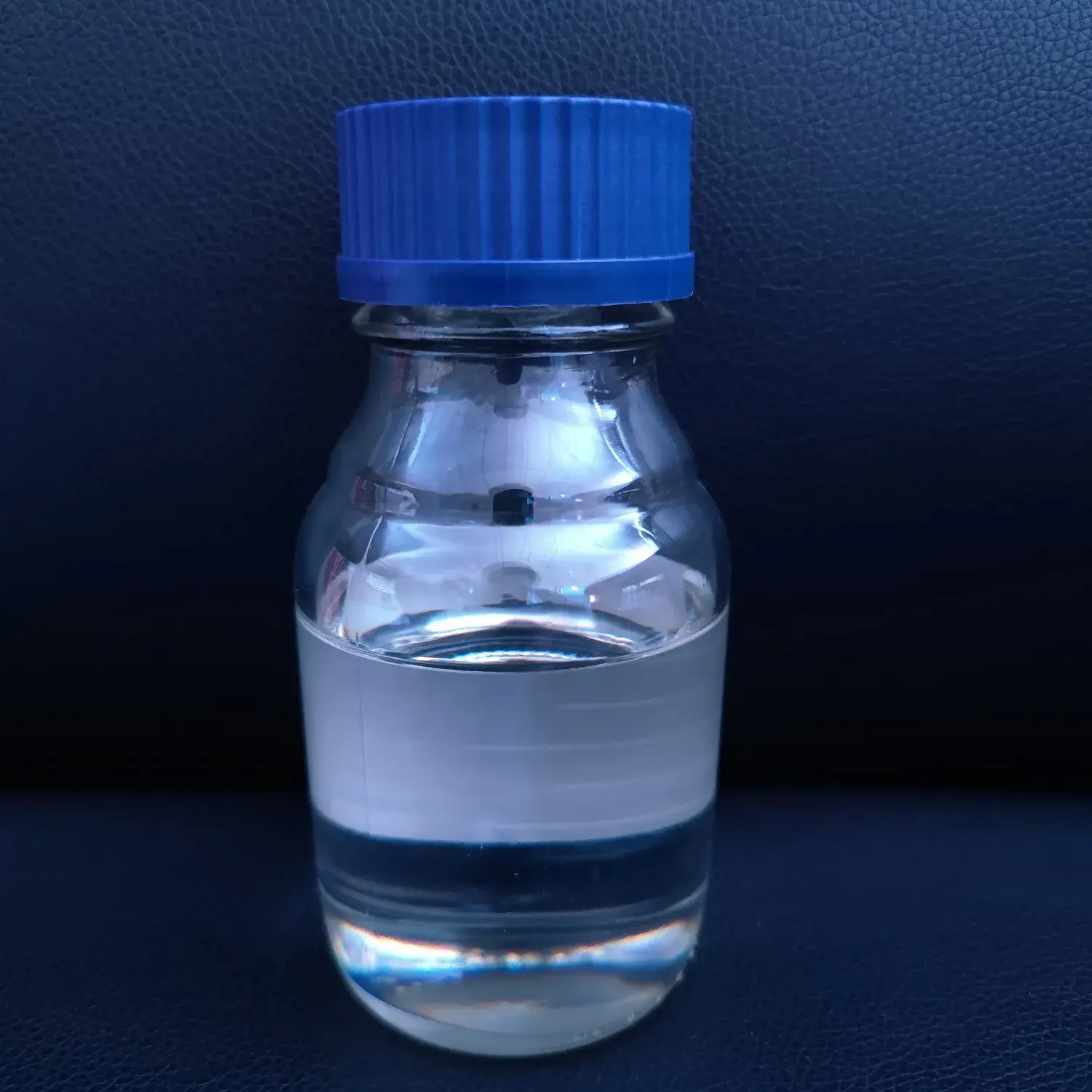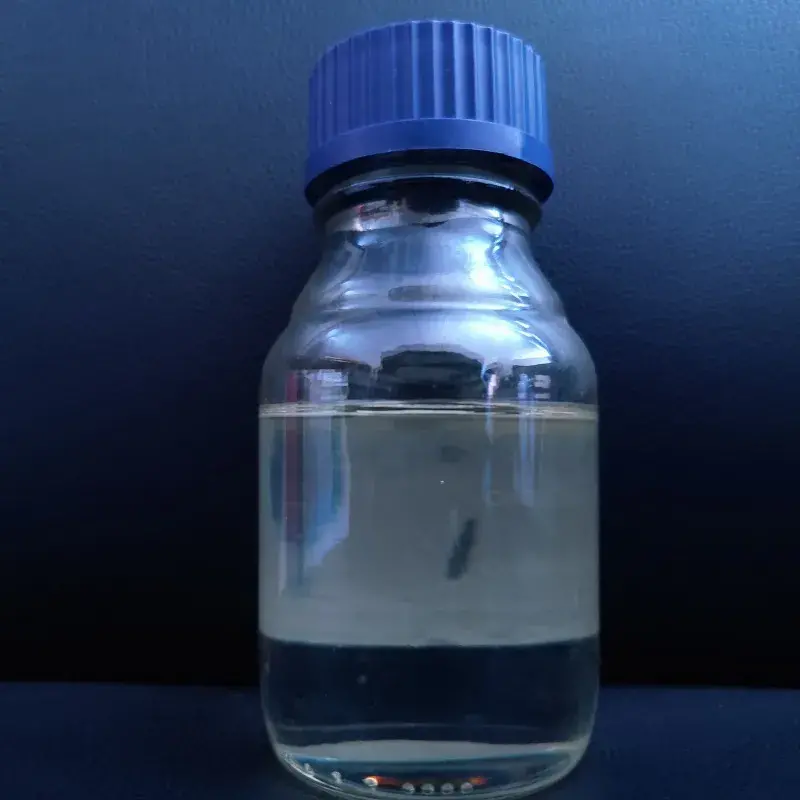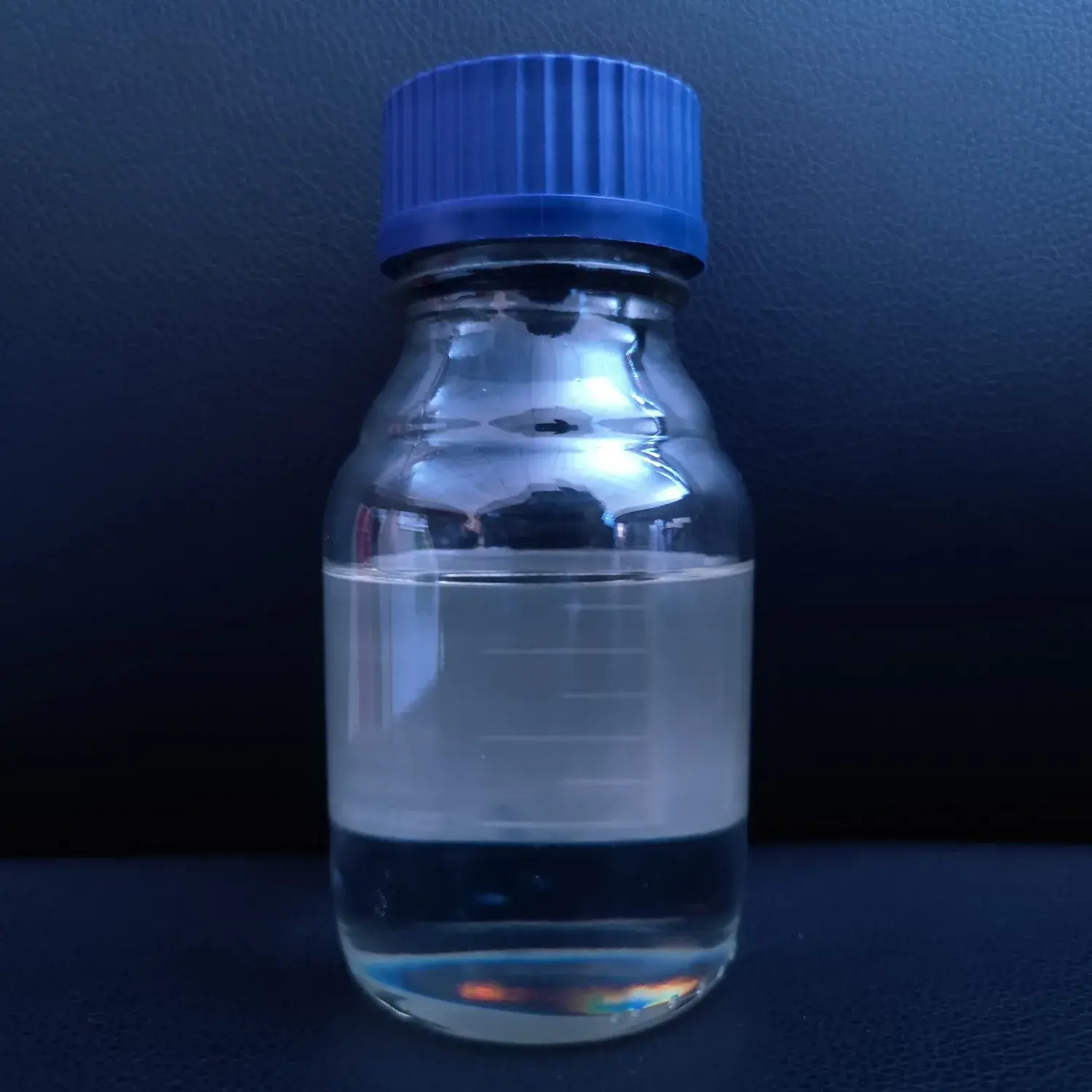When it comes to protecting industrial floors, choosing the right coating is not just a matter of aesthetics; it's a critical decision that impacts safety, durability, and your bottom line. With options like epoxy, polyurethane, and specialized novolac epoxies, the choices can feel overwhelming. This guide is designed to cut through the confusion. As a long-time manufacturer of epoxy resins, I, Leo Wei, have seen firsthand how the right coating system can transform a facility. We will break down the key differences between these powerhouse protective coatings, explore their ideal applications, and help you understand which one is better for your specific needs, ensuring you invest in a solution that lasts.
What is an Epoxy Coating and Why is it so Popular?
At its core, an epoxy coating is a two-part system consisting of an epoxy resin and a polyamine hardener (also known as a curing agent). When these two components are mixed, they trigger a chemical reaction that creates a rigid, durable plastic material. This process, called curing, results in a finish that is incredibly strong and bonds exceptionally well to most substrates, especially concrete. This is why epoxy is a foundational material for so many industrial applications.
The popularity of epoxy stems from its balanced profile of properties. It creates a hard, thick, and impact-resistant surface, making it perfect for areas that endure heavy machinery, rolling carts, and constant foot traffic. Think of warehouses, manufacturing plants, and garages. Furthermore, standard epoxy coatings are ideal for resisting a range of common chemicals, particularly alkali substances. They create a seamless, non-porous surface that is easy to clean and maintain, a crucial feature in environments where hygiene is a priority.
There are many different types of epoxies available, but one of the most common and versatile is Bisphenol A epoxy resin. This workhorse resin forms the basis for a vast array of floor coating formulations, from primers that seal porous concrete to high-build coatings that level and protect worn-out floors. While it may not have the flexibility or UV resistance of other systems, its sheer strength, adhesion, and cost-effectiveness make it an indispensable part of modern protective coatings. A well-formulated epoxy floor can last for years, providing a reliable and safe surface for demanding industrial environments.

What Makes a Polyurethane Coating a Go-To Topcoat?
While epoxy provides the brawn, a polyurethane coating provides the crucial finishing touch. Polyurethane is also a thermosetting polymer, but it possesses a different chemical structure that gives it a distinct set of advantages. The most significant of these is its elasticity and abrasion resistance. A polyurethane floor is more flexible than an epoxy floor, making it less susceptible to scratching and scuffing from everyday wear and tear. This inherent flexibility also gives it better high impact resistance in certain situations, as it can absorb impacts without cracking.
However, the standout feature of certain polyurethane systems, specifically aliphatic polyurethanes, is their outstanding UV resistance. Unlike epoxy, which can yellow and degrade when exposed to sunlight, an aliphatic polyurethane topcoat maintains its color and gloss for years. This makes it the undisputed choice for surfaces exposed to natural light, such as showrooms, retail spaces, and aircraft hangars with large bay doors. Its excellent gloss retention and color stability ensure the floor looks professional and new long after installation.
Because polyurethane is typically applied in thinner coats than epoxy, it is not ideal as a standalone, high-build floor coating. Instead, it shines as the final layer in a multi-coat coating system. Formulations like acrylic polyurethanes offer a fantastic blend of durability and aesthetics, providing a durable finish that resists not only UV rays and scratches but also a wide range of chemicals. It is this combination of toughness and cosmetic stability that makes a polyurethane coating the perfect shield for a robust epoxy base.
What Are the Key Differences Between Epoxy and Polyurethane Coatings?
Understanding the differences between epoxy and polyurethane is crucial for designing a successful floor coating system. While both are high-performance polymers, their strengths and weaknesses are largely complementary. Thinking of them not as competitors, but as partners in a system, is often the best approach. An epoxy builds the foundation, and a polyurethane protects it.
Epoxy is known for its incredible hardness and compressive strength. A high-solid epoxy coating can be applied in thick layers, leveling uneven concrete surfaces and providing immense structural support. This makes it the ideal choice for a primer and build coat, especially for repairing old or damaged concrete flooring. However, this hardness can also make it brittle. In contrast, polyurethane is more flexible and elastic. This elasticity gives it superior scratch resistance and abrasion resistance, as it's more likely to deflect an impact than to chip or fracture.
Let's break down the key differences in a simple table:
| Feature | Epoxy Coating | Polyurethane Coating |
|---|---|---|
| Primary Role | Primer & Build Coat | Protective Topcoat |
| Hardness | Very Hard, High Compressive Strength | Flexible, High Tensile Strength |
| UV Resistance | Poor (Chalks and Yellows) | Excellent (Aliphatic types) |
| Abrasion Resistance | Good | Excellent |
| Application | Thicker layers (high-build) | Thinner layers |
| Chemical Resistance | Excellent against caustics, good against acids | Excellent against solvents, good against acids |
| Pot Life | Generally shorter | Generally longer |
As you can see, an epoxy provides the heavy-duty protection and build, while a polyurethane provides the resilient, UV-stable surface. This is why the most robust industrial flooring solutions almost always use epoxy and polyurethane coatings together.

Where Do Novolac Epoxies Fit Into the Coating System?
When standard epoxy coatings are not enough to handle extreme chemical exposure, we turn to a specialized class of resins: novolac epoxies. A novolac is a type of epoxy resin with a significantly higher density of epoxy groups in its molecular structure. This higher "functionality" creates a much tighter, more densely cross-linked polymer network when cured. The result is a coating with a level of chemical and heat resistance that standard Bisphenol A or Bisphenol F epoxies simply cannot match.
The primary advantage of novolac epoxy coatings is their superior chemical resistance. They are engineered to withstand prolonged exposure to highly aggressive chemicals, including 98% sulfuric acid, hydrochloric acid, and a wide range of industrial solvents. This makes them the material of choice for applications like internal tank linings, chemical secondary containment areas, and processing floors where spills are a constant threat. While a standard epoxy might degrade under such conditions, an epoxy novolac system provides a virtually impenetrable barrier, offering unparalleled protection against acids and alkalis.
However, this high performance comes with trade-offs. Novolac resins are often more brittle than standard epoxies and can have a very short pot life, requiring experienced and efficient application crews. They are also more expensive. Therefore, their use is reserved for environments where their outstanding chemical and heat resistance is a non-negotiable requirement. For a facility that handles harsh chemicals, investing in a novolac system is not a luxury—it is an essential safety and operational measure.
Why is UV Resistance a Critical Factor for a Polyurethane Coating?
One of the most significant weaknesses of a standard epoxy coating is its poor performance under ultraviolet (UV) light. When an epoxy floor is exposed to sunlight, either directly or through windows, it undergoes a process called "chalking." The UV radiation breaks down the polymer chains at the surface, causing the color to fade, the gloss to dull, and a chalky powder to form. Over time, this not only ruins the appearance of the floor but can also compromise its surface integrity.
This is precisely where a polyurethane coating demonstrates its value. Aliphatic polyurethane formulations are specifically designed to be UV stable. They contain molecules that are not easily broken down by UV radiation, allowing them to maintain their original color and gloss for many years, even in direct sunlight. This property, known as UV stability or outstanding UV resistance, is what makes polyurethane the premier choice for a topcoat. It acts as a protective sunscreen for the epoxy base layers beneath it.
For any application where aesthetics and long-term appearance matter, resistance to UV is a critical consideration. Think of commercial garages, retail stores, school hallways, or any high traffic areas that have windows or large doors. A polyurethane topcoat ensures that the investment in a high-quality floor doesn't fade away. The excellent gloss retention and color stability provided by a polyurethane finish keep the floor looking vibrant and professional, which is essential for customer-facing environments.

How Do You Choose the Best Coatings for Industrial Concrete Flooring?
Choosing the right coating for your concrete flooring depends entirely on the specific demands of your environment. There is no single "best epoxy" or "best coating" for every situation. A systematic approach that considers traffic, chemical exposure, UV light, and safety requirements is the key to success.
Here's a practical guide for different coatings for industrial settings:
-
For Warehouses and Logistics Centers: These areas see heavy forklift traffic and constant abrasion. The ideal coating system would be a high-build, high solids epoxy base coat to provide thickness and impact resistance. This should be followed by a durable, abrasion-resistant polyurethane topcoat to handle the wear and tear from tires and pallets. The epoxy provides the strength, while the polyurethane provides the longevity.
-
For Chemical Plants and Processing Areas: In environments where the floor is regularly exposed to chemical spills, a standard epoxy may not suffice. This is the prime application for Novolac Epoxy Resin. A full novolac epoxy system, including a novolac primer and topcoat, offers the outstanding chemical resistance needed to protect the concrete substrate from corrosion and degradation.
-
For Food and Beverage Facilities: Hygiene is paramount here. The goal is a seamless, non-porous surface that is easy to sanitize. A multi-layer epoxy floor coating system is perfect. It creates a smooth surface with no grout lines where bacteria can hide. Often, an antimicrobial additive is included in the formulation.
-
For Showrooms, Hangars, and Public Venues: Aesthetics and UV stability are crucial. The system of choice is an epoxy primer and build coat for strength, finished with a high-gloss, aliphatic polyurethane topcoat. This provides a beautiful, reflective, and long-lasting finish that won't yellow or fade over time.
By matching the properties of the coating to the needs of the facility, you ensure a high-performance floor that delivers both protection and value.
Can You Combine Epoxy and Polyurethane in a Single Coating System?
Absolutely, and in most high-performance applications, you should. Combining epoxy and polyurethane coatings into a single, multi-layered system is the industry standard for achieving the best possible outcome. This approach leverages the distinct strengths of each material to create a floor that is stronger, more durable, and longer-lasting than one made from a single type of coating.
In this synergistic system, the epoxy coating is used as a primer and a build coat. As a primer, its powerful adhesive properties create an unbreakable bond with the concrete substrate, sealing it from moisture and ensuring the rest of the system won't delaminate. As a build coat (or mid-coat), its ability to be applied in thick layers helps to level the surface, fill in small cracks and imperfections, and provide the bulk of the floor's high impact resistance and compressive strength.
Once the epoxy base is cured, the polyurethane coating is applied as the final topcoat. This thin, yet incredibly tough, layer serves as the sacrificial and aesthetic surface. The polyurethane coatings provide the superior abrasion and scratch resistance needed to handle daily traffic. Critically, the polyurethane topcoat also delivers the UV protection that the epoxy lacks, preventing discoloration and preserving the floor's appearance. This combined coating system offers a comprehensive solution that an epoxy or polyurethane alone cannot match.
What Common Mistakes Should You Avoid When Applying Epoxy and Polyurethane Coatings?
As a manufacturer, I can tell you that even the highest quality epoxy resin will fail if it's not applied correctly. The success of a floor coating project is as much about the application process as it is about the materials themselves. For a technical director like David Miller, avoiding these pitfalls is key to preventing costly production delays and rework.
The most common and critical mistake is inadequate surface preparation. The concrete must be clean, dry, and properly profiled (slightly roughened) for the epoxy primer to achieve a tenacious bond. Any oil, grease, or old paint will act as a bond-breaker, leading to peeling and flaking. Grinding or shot-blasting the concrete is a non-negotiable first step.
Another frequent error is ignoring the product's pot life. Once the resin and hardener are mixed, the clock starts ticking. For high solids epoxies or fast-curing formulations, the pot life can be very short. Trying to apply material that has already begun to thicken and cure will result in a poor finish with roller marks and imperfections. It's crucial to only mix a small amount of epoxy that can be applied comfortably within its working time. Finally, environmental conditions play a huge role. Applying a coating in temperatures that are too high or too low, or when humidity is excessive, can interfere with the curing process, leading to a soft or tacky finish. Always follow the manufacturer's technical data sheet to the letter.

How Does a Manufacturer's Quality Affect Your Coating Solution?
For any company that formulates and sells finished products, the quality of your raw materials is everything. When it comes to epoxy resins and hardeners, inconsistency is the enemy. A procurement manager's worst nightmare is receiving a new batch of resin that has a different viscosity or color from the last one, forcing the formulation chemists to halt production and recalibrate their entire process. This is where partnering with a reliable, quality-focused manufacturer becomes paramount.
A reputable supplier will have stringent quality control measures in place, such as ISO 9001 certification. This ensures that every batch of epoxy resin meets the exact specifications outlined in the technical data sheet. Batch-to-batch consistency means that your production process remains stable, predictable, and efficient. At my company, TERVAN, we pride ourselves on this consistency, understanding that our customers rely on our materials to deliver predictable performance in their own products, whether it's an industrial coating, an adhesive, or an electronic potting compound.
Furthermore, a great supplier acts as a technical partner. Their team should have deep expertise in the chemistry and application of their products. They can provide guidance on everything from formulation adjustments to troubleshooting application issues. When you source materials from a specialized factory focused on R&D, you are not just buying a chemical; you are gaining access to a wealth of knowledge that can help you innovate and solve problems. This partnership is the foundation of a stable and successful supply chain.
What Future Trends Are Shaping the Protective Coatings Industry?
The world of protective coatings is constantly evolving, driven by environmental regulations, new technologies, and increasing demands for performance. One of the biggest trends is the shift towards more environmentally friendly solutions. This means a move away from traditional solvent based coatings to high solids and 100% solid epoxy and polyurethane systems. These products contain little to no volatile organic compounds (VOCs), making them safer for applicators and better for the environment.
Another major area of innovation is the development of specialized resins designed for unique challenges. For example, the need for improved fire safety in electronics and construction has led to the creation of advanced materials like Phosphorus containing Epoxy Resin. These resins have inherent flame-retardant properties, helping to prevent the spread of fire without relying on halogenated additives that can be harmful. This focus on multi-functional materials that solve specific problems is a key direction for the industry.
We are also seeing advancements in application technology and curing mechanisms. Innovations like moisture cured urethanes that can be applied in more humid conditions, and polyaspartic coatings (a type of polyurea) that cure extremely fast, are allowing projects to be completed more quickly and in a wider range of environments. As manufacturers, we are constantly engaged in R&D to push the boundaries of what these amazing polymers can do, creating stronger, safer, and more durable coating solutions for the future.
Key Takeaways to Remember
- Epoxy is the Foundation: Epoxy coatings provide a hard, thick, and durable base with excellent adhesion to concrete and good chemical resistance, making them the ideal primer and build coat.
- Polyurethane is the Shield: A polyurethane coating serves as a flexible and abrasion-resistant topcoat, offering superior UV stability to protect the epoxy base from yellowing and degradation.
- Novolac is for Extreme Chemicals: For environments with aggressive acids and solvents, Novolac epoxy offers unparalleled chemical and heat resistance that standard epoxies cannot match.
- A System is Best: The most effective and long-lasting industrial floors use a combined system, leveraging epoxy for its strength and build, and polyurethane for its surface durability and UV protection.
- Quality is Non-Negotiable: The success of your project depends on the batch-to-batch consistency of the raw materials. Partnering with a quality-certified manufacturer is critical for predictable performance.
Post time: Sep-26-2025



